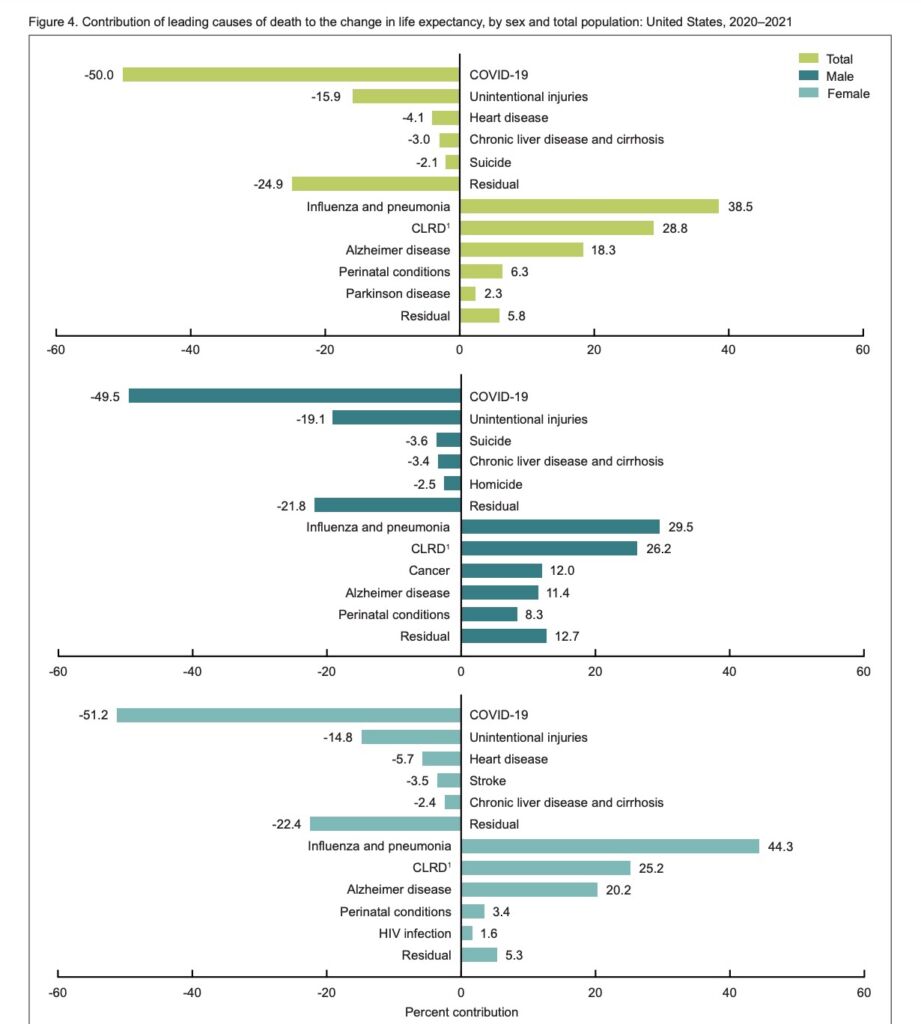Life expectancy fell in 2021, here’s why lockdowns are partly to blame
US life expectancy went down again in 2021 after falling in 2020. According to preliminary data from the CDC, life expectancy was down to 7.61 —the lowest it has been since 1996 — declining 0.9 years from 77.0 in 2020. In 2019, life expectancy was 78.8 years.
What is causing this?
COVID-19 deaths contributed to half of this. However, COVID-19 deaths do not fully explain this trend. An increase in deaths from other things like heart disease, unintentional injuries such as drug overdoses, and suicide also contributed to the decline.
The decline of 0.9 year in life expectancy between 2020 and 2021 was primarily due to increases in mortality due to COVID-19 (50.0% of the negative contribution), unintentional injuries (15.9%), heart disease (4.1%), chronic liver disease and cirrhosis (3.0%), and suicide (2.1%).

There was a decline in other causes of death like Influence, Pneumonia, Alzheimer’s, and Parkinson’s. Deaths in these categories, however, in these categories mostly occur among the elderly who were disproportionately affected by COVID-19. So there is a possibility that COVID-19 deaths subsumed these deaths — at least statistically speaking.
Why lockdowns are partly to blame
It is possible that some people did not seek care because they were afraid of contracting COVID-19 at the hospital.
But in an effort to curb the spread of the virus, health care centers also shut down “selective” or nonessential services thereby denying people care. And of course, some of these selective services included checkups for things like heart disease.
End result? People did not get the care they needed. So, by prioritizing COVID-19 above all other deaths, bad policymaking likely led to other deaths that could have been prevented.
Lockdowns also likely contributed to increased drug use, and thereby overdoses, in a lot of ways. For one, lockdowns increased mental health issues while at the same time denying individuals access to healthcare. The feelings of isolation and uncertainty that were brought on by social distancing requirements might have pushed some to turn to drugs. Moreover, lockdowns were associated with significant job and income losses that could have also contributed to feelings of anguish and hopelessness.
The increase in non-COVID-related deaths associated with lockdowns was something that researchers warned would happen.
Contrary to popular opinion among policymakers that the choice was between saving the economy and saving lives, this has not been the case. One-size-fits-all policies have not only ruined the economy but have also contributed significantly to numerous other deaths that could have been prevented.
And it is very likely that the full extent of the damage is yet to be seen in the coming years.